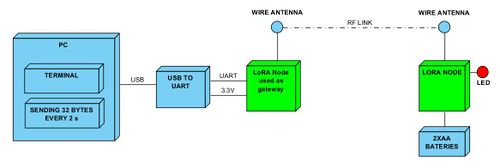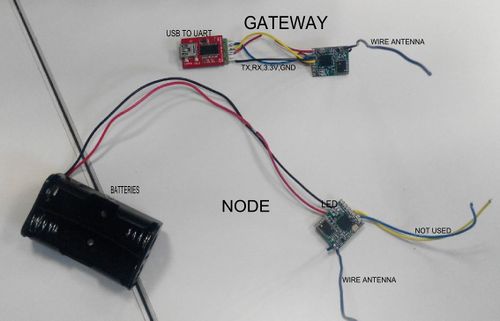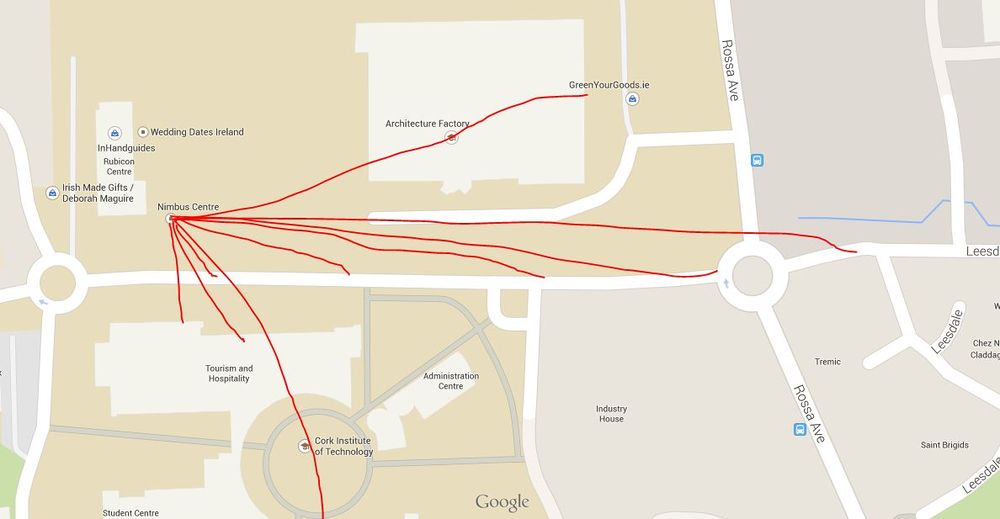LoRa evaluation at Nimbus
Contents
Background
Semtech Lora wireless transceiver-chip technology promises longer range that usual WSN tranceivers.
This is based only on the transceiver hardware and Semtech's LoRa modulation.
Semtech transceivers can use ISM frequency bands at 136, 433, 866, 900 MHz
This is a "quick and dirty" evaluation of LoRa technology using the lowest cost available boards and (almost) bare-metal firmware.
Our evaluation only tests the hardware/LoRa-modulation performance and not any higher level protocol like MAC or other.
Advantages
- Significantly higher range than other WSN transceivers for the same power consumption
Disadvantages
- Propriety technology of Semtech
- No mature support for networking firmware
Node description
We used HM-TRLR-S-868 low cost module from HopeRF
which includes a small microcontroller providing UART interface, AT-Commands for configuration and some primitive networking capapabilities.
the packet length is 32 bytes.
The Antenna design of this board is not optimized, just a piece of wire is soldered to one of the board pins. A better designed module will have better performance.
Setup
Configuration
- Baud rate 9600 bps
- Transmitting power +20dbm
- Bytes per transmission: 32Bytes (=1 packet)
Results
- We had signal reception at the end of all red lines in the MAP
Conclusions
- The results were better than we normally experience with modules of this type despite their pure RF design.
What is next
- Test nodes with good RF/Antenna design
- Create small scrips to check the Bit Error Rate


